Vega is a powerful open-source visualization grammar for creating interactive visualizations in JavaScript. It provides a declarative syntax for defining visualizations and supports a wide range of chart types, including bar charts, line charts, scatter plots, and more. With Vega, you can easily create custom visualizations by specifying the data, encoding the visual properties, and defining the interaction behavior.
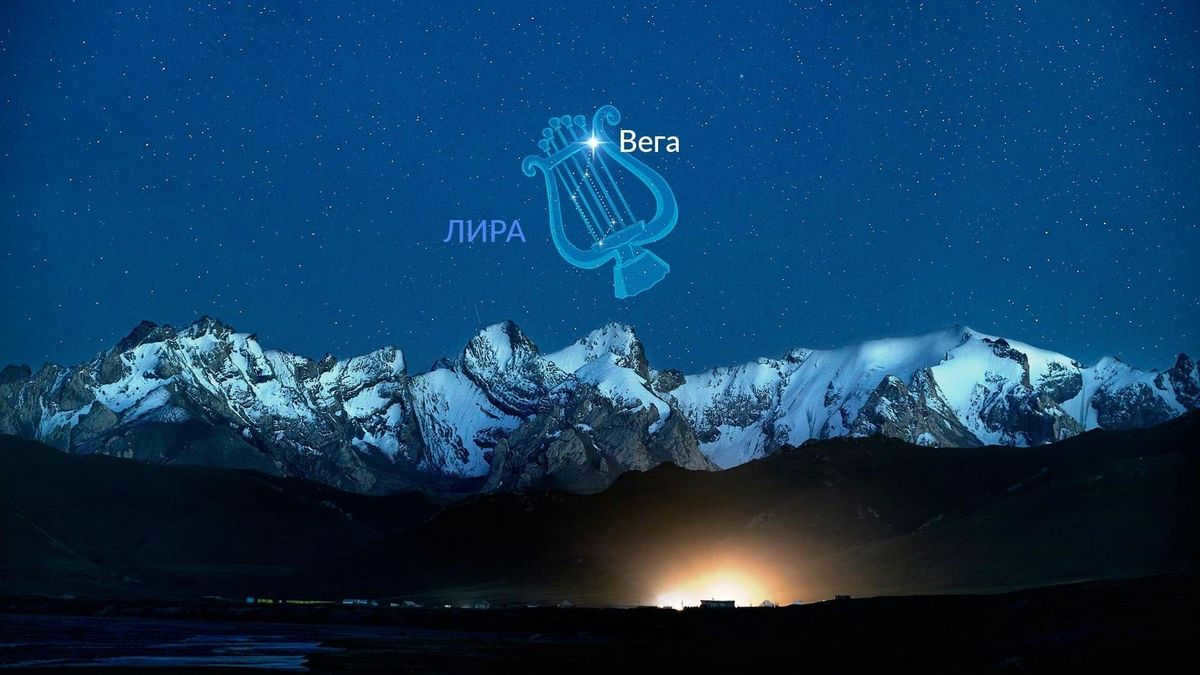
Vega is a star that has been extensively researched, yet it continues to hold many surprises. This piece will provide insights into locating Vega in the night sky and delve into the factors that make it a captivating subject of scientific investigation.
What are the distinctive features of the star Vega?
For centuries, Vega has been under the keen observation of astronomers from different cultures, including Chinese, Arab, and Greek, who left their accounts of it. In contemporary astronomy, Vega has served as a crucial benchmark for assessing the color and apparent luminosity of stars. Presently, scientists continue to rely on Vega to investigate the initial phases of star formation and to explore exoplanets. Moreover, Vega is expected to become our next prominent Polaris. Keep reading to discover the primary characteristics of this star.
Main characteristics of Star Vega (Alpha Lyrae)
- Official designation: Alpha Lyra, α Lyr
- Alternative names: Vega
- Catalog designations: HIP 91262, HR 7001, HD 172167, TYC 3105-2070-1
- Constellation: Lyra
- Star type: A0V spectral class main-sequence star
- Right Ascension: 18 h 36 m 56.3 s
- Declination: +38° 47′ 01″
- Mass: 2.1 times the mass of the Sun
- Luminosity: 40.12 times the luminosity of the Sun (37 times brighter than the Sun)
- Radius (polar/equatorial): 1.64 million km / 1.96 million km (2.362 / 2.818 times the radius of the Sun)
- Temperature: 9,600 K
- Distance from Earth: 25 light years
- Period of rotation: 12.5 hours
Is Vega the most luminous star in the celestial sphere?
No, the most luminous star in the nocturnal firmament is Sirius. In the Northern Hemisphere, Vega is the third most luminous star after Sirius in the constellation of Canis Major and Arcturus in the constellation of Boötes. In the entire celestial sphere, Vega is the fifth most luminous star, behind Canopus in the constellation of Carina and Alpha Centauri in the constellation of Centaurus.
If you examine Vega’s apparent stellar magnitude using the Sky Tonight astronomy app, you’ll notice that its brightness is designated as zero. However, this does not imply that Vega lacks brightness. In reality, Vega serves as a point of reference on the stellar magnitude scale, which encompasses both positive and negative values. Until the late 20th century, Vega was employed as an absolute reference for gauging the brightness of other stars. Presently, more precise calculations reveal that Vega’s apparent stellar magnitude is +0.026, although for amateur observations, it is rounded down to zero.
Take a look at our brief video tutorial on how to identify the characteristics of stars and other celestial objects on the Sky Tonight app.
The magnitude of stars visible to us is determined by their size, temperature, and distance from our position. Vega is a prime example of this phenomenon: it shines brightly due to its large size, high temperature, and relatively close proximity to Earth. In fact, Vega has a diameter approximately 2.8 times greater than that of the Sun, and its surface temperature is over 1.5 times hotter than the Sun. Furthermore, Vega is situated a mere 25 light-years away from our planet, making it incredibly close for a star.
Discover a comprehensive collection of the most luminous stars in the night sky through our captivating infographic.
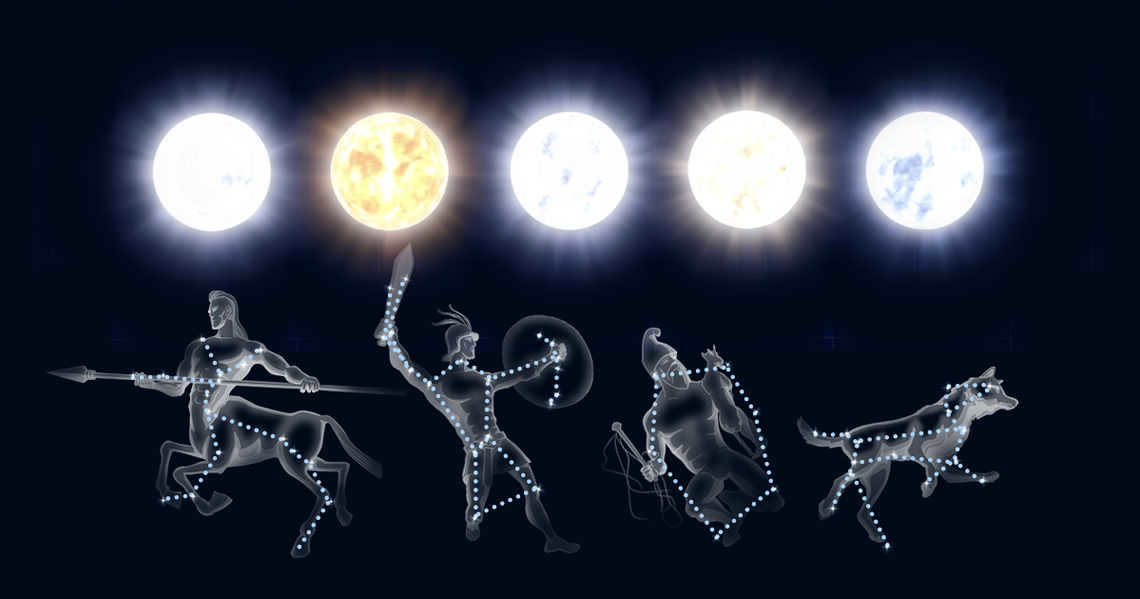
Take a look at this infographic to discover the names of the most brilliant stars and their constellations, along with their distance from Earth and the optimal time to observe them!
What is the color of the star Vega?
Vega is classified as a blue-white star of the A0V spectral class:
- The letter “A” signifies a surface temperature of approximately 10,000 K.
- The number 0 denotes that it is the hottest among the 10 subclasses within this spectral class.
- The letter “V” signifies that it is a main-sequence star, meaning it is in the primary stage of its lifecycle, during which the star converts hydrogen into helium.
Vega is traditionally considered the reference point in the UBV photometric system. The zero point in this system represents “white” color. Stars with negative index values are categorized as “blue” and those with positive values are categorized as “red”. However, despite being categorized as “white”, we refer to Vega as “blue-white”. This is because the spectral characteristics of stars do not account for atmospheric conditions, and the blue tint we perceive is a result of Earth’s atmosphere modifying the light we observe.
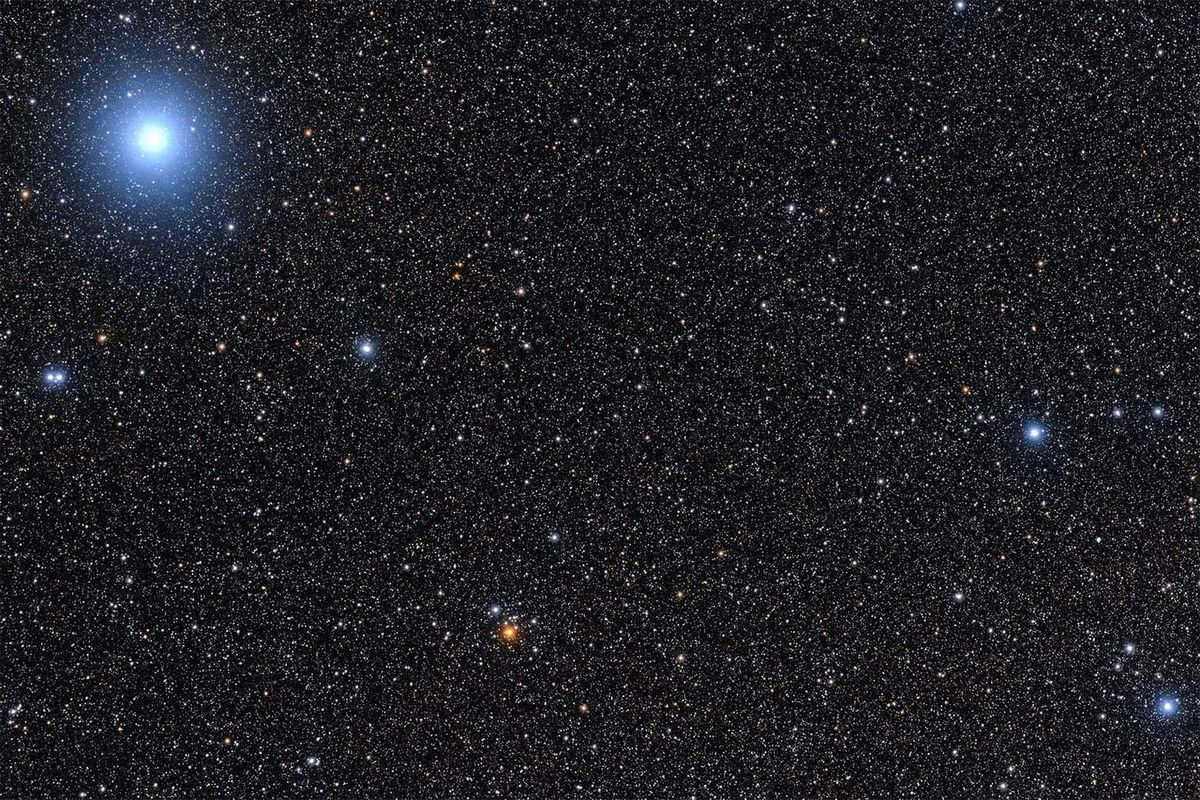
What is the age of Vega?
Vega has an estimated age of approximately 455 million years. This is one-tenth the age of our Sun, but Vega is aging at a faster rate. Both stars are currently in the middle of their main life cycles, but Vega is expected to burn out in 450 million years, whereas our Sun has another 4.5 billion years of life remaining.
What is the rotational speed of Vega?
Vega completes one revolution on its axis every 12.5 hours, while the Sun takes 27 days to complete one rotation. Due to its rapid rotation, Vega has a wider and colder equator compared to its poles.
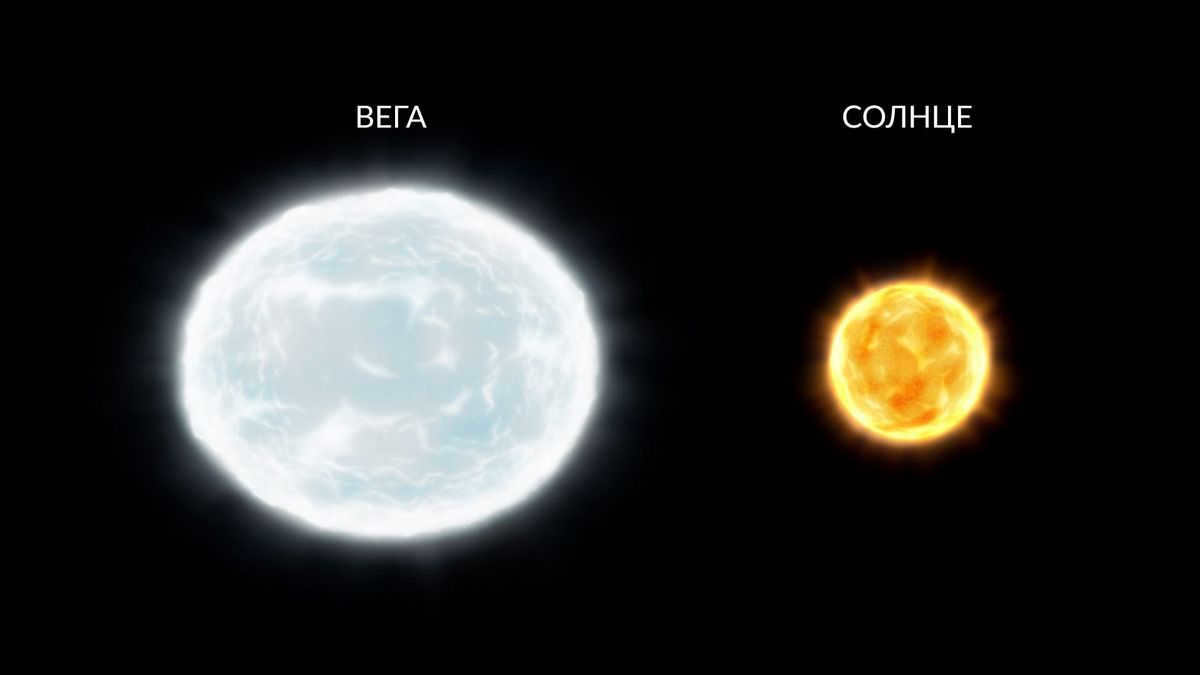
What is the method for locating Vega in the celestial sphere?
Vega, being the most luminous star in the Lyra constellation, which happens to be one of the tiniest constellations visible at night, is also a prominent member of the Summer Triangle asterism. By utilizing the Sky Tonight application, pinpointing Vega’s position in the sky becomes a breeze. The subsequent article will provide you with a detailed, step-by-step guide.
What is the location of Vega in the sky?
In the middle of summer, Vega is positioned nearly directly above in the mid-latitudes. Throughout the rest of the year, it is still easily observable in the Northern Hemisphere, but appears lower on the horizon. In the Southern Hemisphere, the star is visible close to the northern horizon from April until late September.
How to locate Vega in the sky using the Grand Summer Triangle?
Locating Vega can be effortlessly done by looking for the Summer Triangle, a prominent asterism comprised of Vega from the constellation Lyra, Altair from the constellation Eagle, and Deneb from the constellation Swan. Vega, the brightest of the three stars, shines with a blue-white hue. During the summer months in the Northern Hemisphere, Vega rises in the eastern sky as soon as darkness falls. Its brilliance makes it unmistakable and easily distinguishable from other celestial objects in that region of the sky. Once Vega is found, you can then locate Altair to the lower right and Deneb to the lower left. In the Southern Hemisphere, the Summer Triangle will be inverted and appear low on the northern horizon.
To simplify navigation, be sure to check out our infographic highlighting the stars that are most readily identifiable.

Discover the most brilliant celestial bodies: Sirius, Arcturus, Polaris, and many others. Familiarize yourself with the nocturnal expanse through this illustrative guide!
Is it possible to locate Vega in the firmament using the Sky Tonight application?
By utilizing the Sky Tonight astronomy application, effortlessly locate Vega by adhering to these guidelines:

- Access the app’s search bar and input “Vega” as the keyword.
- Select the blue target icon located next to the desired outcome. The app will display the star’s location on the celestial map.
- Tap the blue compass icon situated in the bottom right corner of the display. The app utilizes your device’s geolocation to align the image on the screen with the actual sky above you.
- Rotate the device in the direction indicated by the white arrow until you can observe Vega both on the screen and in the sky.
Vega in mythology
Vega is mentioned in various ancient myths, including Chinese, Japanese, Indian, Greek, and Arabic myths. Some of these myths are preserved in the name of the star and its constellation.
The Arabic name is the diving eagle
The name “Vega” is derived from the Bedouin Arabic expression “an-nasr al-wāqi'”, which means “swooping eagle or vulture”. The term “wāqi” translates to “falling” or “swooping”. Vega has been recognized in Arabic astronomy since the early 6th century CE, along with its companion Altair, whose name means “soaring eagle or vulture”. Both stars are mentioned in various scientific and poetic texts.
The Greek Legend of Lyra
In Greek mythology, the bright star Vega and its constellation were known as “Lyra” or “Harp”. According to the ancient myth, the celestial lyre belonged to the legendary musician Orpheus. After Orpheus tragically met his demise, Zeus, the king of the gods, decided to immortalize his talent by transforming his lyre into a constellation. As a result, the eagle was dispatched by Zeus to retrieve the harp, and thus both the Eagle and Lyra were forever etched in the night sky.
The Mythical Romance of Vega and Altair
Altair and Vega hold a special place in the hearts of Chinese, Japanese, and Korean cultures, as they are the protagonists of enchanting love tales. In Chinese folklore, Altair takes on the persona of Nyulan, a young shepherd, while Vega embodies the weaver Zhinyui. These star-crossed lovers found themselves torn apart by the Heavenly River, also known as the Milky Way. Their encounters were limited to just once a year, on the seventh day of the seventh lunar month, during the Qishi festival. The Japanese version of the legend follows a similar narrative, where the couple reunites each year during the Tanabata festival. Meanwhile, in the Korean adaptation, the lovers are able to come together once a year during the Chilseok Festival.

Amazing information about the Vega star
The initial star to be captured on film
On the 17th of July, 1850, Vega made history as the first star, apart from the Sun, to be captured on film. Astronomers James Adams Whipple and William Cranch Bond utilized the daguerreotype technique to photograph the star. They skillfully directed Vega’s light onto a heat-sensitive silver-plated copper sheet and exposed it for approximately 20 minutes using a 15-inch refractor at the Harvard College Observatory.
Fast forward two decades, in August 1872, and the star once again left its mark on history. This time, it was amateur astronomer Henry Draper who immortalized Vega. Draper managed to capture a photograph of Vega’s spectrum. By breaking down Vega’s light into its individual colors, scientists were able to uncover its chemical composition.

A potential planetary system
In recent times, astronomers have made the remarkable discovery that Vega harbors a vast asteroid belt, akin to our solar system’s main asteroid belt and the Kuiper belt. The available data strongly indicates the presence of two distinct belts encircling Vega: an inner belt characterized by intense heat and an outer belt that remains cold. It is within the gap between these belts that scientists hypothesize the existence of multiple planets in orbit around the star.
A recent publication in the Astronomical Journal has provided evidence for the presence of a planet that fits the criteria described. According to this study, this particular planet is estimated to have a size comparable to that of Neptune or Uranus. What sets it apart is its proximity to Vega, which is similar to the distance between Mercury and our Sun. Furthermore, scientists believe that the temperature on this planet is exceptionally high, with measurements reaching up to 2,977 °C. This makes it the second hottest planet among those that have been observed thus far. However, it is important to note that further investigation is required in order to validate these initial findings.
Our past and future North Star
While it may seem like the North Star, Polaris, remains stationary, it actually moves slowly across the sky, completing a full revolution every 26,000 years. This means that different stars occupy the position at the north celestial pole over time. This movement is caused by the Earth’s axis precession. Around 12,000 BC, during the Paleolithic era, Vega was seen in the place of Polaris, instead of Alpha Minor. And in the future, in approximately 13,600 years, Vega will once again become the North Star.
Using Vega as a Guide for Spotting the April Lyrids
Vega serves as a distinctive point of reference for detecting the April Lyrids, one of the most brilliant meteor showers. The star is positioned close to the radiant of the meteor stream, making it crucial to be situated at a high point in the sky in order to pinpoint the optimal time for searching for these celestial phenomena.
Vega is an incredibly bright star that holds a unique position in the field of astronomy. For centuries, it has served as the gold standard for measuring the brightness and color of other stars. Today, scientists continue to study Vega in hopes of discovering potential exoplanets within its system. In approximately 13,000 years, Vega will take on a new role as our North Star, shining brighter than any other star in the next millennium. Take the opportunity to familiarize yourself with this remarkable celestial body and locate it in the night sky using the Sky Tonight app!
Countless individuals gazing up at the heavens on warm summer evenings have likely pondered the identity of a particularly radiant star that seems to hover near the zenith. During the extended twilight of June, this star emerges first, positioned high above the southern horizon. Its name is none other than Vega, one of the most prominent stars that grace the night sky. As the primary luminary in the constellation Lyra, Vega reigns as the queen of summer nights.
Vega is the 5th brightest star in the night sky, according to the rankings. It is not as bright as Sirius and Canopus, but it is brighter than Alpha Centauri and slightly brighter than Arcturus. However, only two stars, Sirius and Arcturus, can be seen from Russia that are even brighter. Unfortunately, Sirius is only visible in the winter and not during the summer. On the other hand, Arcturus has the same brightness as Vega when viewed with the naked eye. In fact, Vega has a slight advantage over Arcturus as it can be observed in the sky all year round in most parts of Russia.
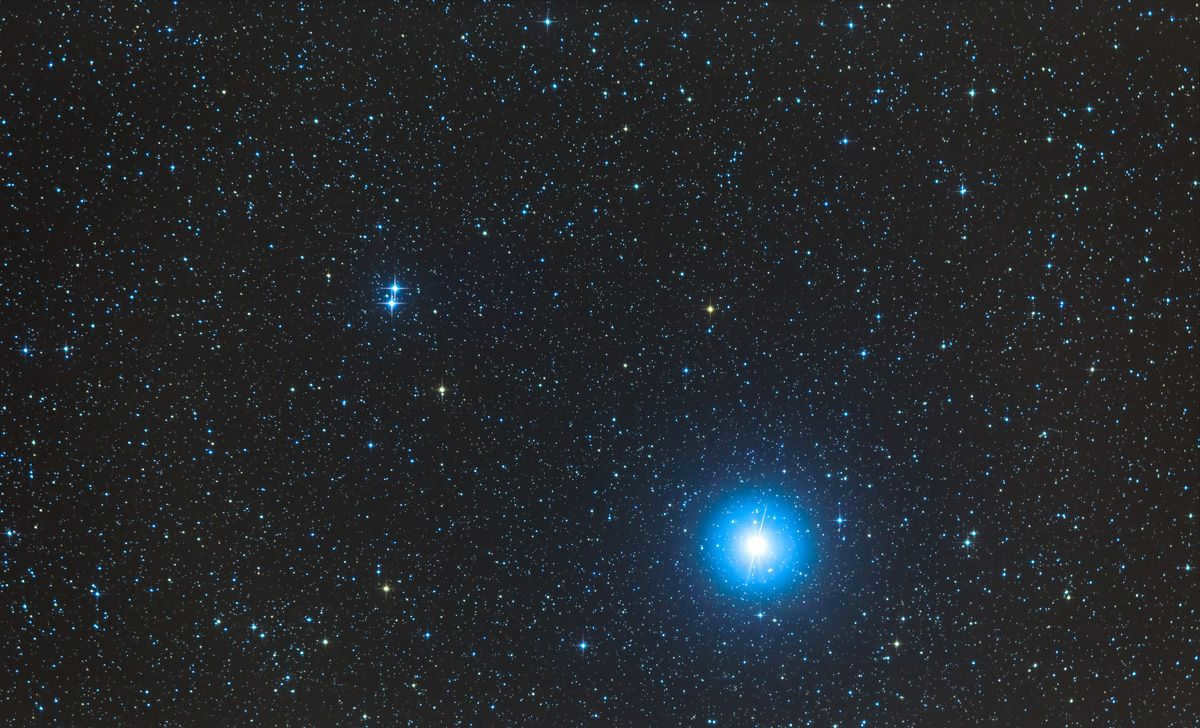
Vega, along with the renowned “double double” epsilon of Lyra, can be seen against the backdrop of star fields. When viewed through binoculars and a small telescope, this is a rough representation of Vega’s appearance. Photograph by Alan Dyer.
Interestingly, the name Vega has no connection to the well-known Latin surname. Its origin can be traced back to the Arabic word waqi, meaning “falling,” derived from the phrase النسر الواقع (an-nasr al-wāqi’), which translates to “falling eagle.” This name was first documented in the Alphonse Tables during the 13th century. Prior to that, the Greeks referred to this star as Luera, the Romans called it Lyra, and it was known as Allore in the “Almagest.” Additionally, Cicero referred to it as the star Phidis, while Pliny identified it as Phidicula. In ancient Rome, Vega held great significance, as its morning descent coincided with the onset of autumn.
Locating Vega in the night sky is an effortless endeavor due to its luminosity. During a warm summer night, position yourself facing the southern direction and direct your gaze upwards. There, you will behold Vega proudly positioned high in the celestial expanse, in close proximity to the zenith! It is important to note that Vega does not exist in solitude within this particular region of the heavens! In unison with two other brilliantly shining stars, Vega composes a vast triangular formation. This triangular configuration possesses a grandeur that is accentuated by its pointed apex, which extends downwards.
Vega is commonly referred to as the “star of summer” as it can be seen in the southern part of the sky during the evening hours of the summer months. (As you may be aware, the southern region of the sky provides the optimal vantage point for observing celestial bodies such as stars, planets, and the Moon, as they reach their highest point above the horizon when crossing the celestial meridian.) At midnight during midsummer, Vega reaches its highest point in the southern sky. Towards the end of August, it can be observed passing through the southern meridian during the late afternoon. Therefore, the warm evenings of August and early September present the ideal opportunity to observe Vega!
However, Vega can be seen in the celestial sphere not only during the summer season – it is fully visible during the spring and throughout the autumn. Moreover, individuals residing in Moscow, Minsk, Kiev, Samara, Novosibirsk, St. Petersburg, and numerous other cities situated north of the 50° north latitude can observe Vega in the sky throughout the entire year. If, during the summer and early autumn nights, Vega can be observed at a high altitude in the southern part of the sky, then during the latter half of autumn, it can be seen in the west. During the winter season, Vega appears to hover low above the horizon in the northern direction. In the springtime, this astral body is effortlessly spotted in the eastern region of the celestial sphere.
Vega and the Great Summer Triangle
The Great Summer Triangle, consisting of three bright stars – Vega, Deneb, and Altair, is a prominent asterism that can be observed in the sky from May to October. It is the dominant star pattern during the summer months and immediately catches the eye when the evening sky is first glimpsed in July or August.
Vega, the brightest star in the triangle, is located in the upper right corner of the asterism. The Great Summer Triangle serves as a valuable point of reference for locating other constellations in the summer sky. Additionally, the Milky Way traverses through this asterism, adding to its significance and beauty.
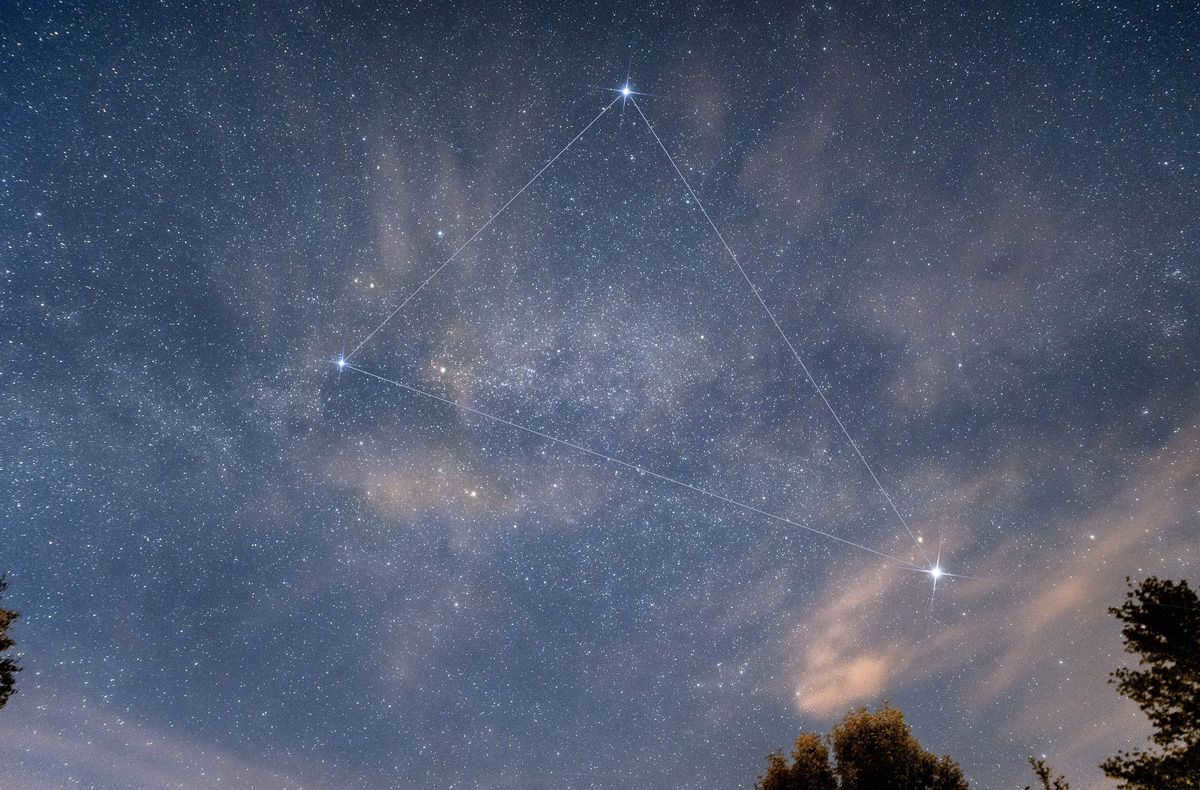
The summer triangle is ascending. Vega occupies the highest position. Image credit: frankastro
Alpha Lyrae
Simultaneously, Vega leads a small yet prominent group of stars known as the Lyra constellation. The Lyra constellation consists of a parallelogram shape formed by stars of 3rd and 4th magnitude, positioned directly below Vega. Along with the epsilon and zeta stars, Vega creates a small equilateral triangle that is situated on top of the parallelogram.
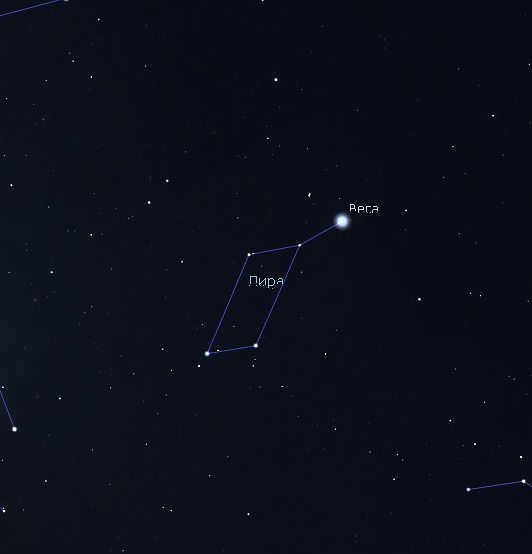
The constellation Lyra. Figure: Stellarium
It is worth noting that the star Vega had already been assigned the Greek letter “alpha” long before Johannes Bayer’s famous atlas Uranometria, which was the first to assign letters of the Greek alphabet to the brightest stars in constellations. The brightest star was designated as alpha (α), the next brightest as beta (β), and so on, all the way to omega (ω). In the 1551 edition of the Almagest, the star was referred to as α Lyra. This was likely because of its exceptional brightness compared to the other stars in its vicinity.
Observing Vega through a telescope
If you happen to possess a telescope or binoculars, do not let the opportunity slip away to observe Vega! Binoculars offer a wider field of view compared to a telescope and will allow you to witness the breathtaking starry expanse surrounding Vega. Through the telescope, Vega presents itself as a distant, bluish-white celestial body encircled by numerous faint, glistening stars. Upon careful observation, one can discern a satellite with a magnitude of 9.5 situated 57″ south of the star. It is important to note that Vega’s companion is purely optical in nature, with the stars appearing close to each other in the sky but actually being separated by vast distances in reality. To fully appreciate the splendor of this duo, a telescope equipped with a minimum 150 mm lens is necessary. With such a device, you will be able to witness a tiny speck gliding amidst the radiance of the primary star. Additionally, located approximately 1′ west of Vega is another star, which proves to be a more challenging sight to behold amidst the star’s luminosity. Only advanced amateur telescopes can accomplish this task, as the companion star possesses a magnitude of merely 11 m.
When observing Vega through a telescope, it appears as if the star has a small blue disk under optimal atmospheric conditions. In the 17th and 18th centuries, astronomers mistakenly believed that they could see disks of stars through their telescopes. It wasn’t until the 19th century that astronomer Erie proved that these disks were actually an illusion caused by the diffraction of light. However, for Galileo and others, this observed phenomenon served as further evidence that stars were distant suns. Galileo once wrote, “Moreover, the sun has no discernible properties that distinguish it from the multitude of fixed stars…” This was a time when many educated individuals still believed that the stars were attached to a crystal sphere…
Physical attributes of Vega
Vega is classified as a hot star of the A0V spectral class. It is significantly larger and more luminous than our Sun: it has a mass that is 2.1 times greater and a diameter that is 2.8 times larger. Additionally, Vega emits 40 times more light than our Sun during daylight hours. The star’s color can be described as white with a hint of blue.
Vega is one of the nearest stars to our Sun, with a distance of 25.3 light-years or 7.67 parsecs. It is also the most radiant star within a 10 parsec radius of our Sun.
Units of mass, radius, and luminosity for stars are provided in terms of the Sun. Distances are measured in parsecs (pc) and light-years (ly).
Vega, with an estimated age of 450 million years, is roughly 10 times younger than the Sun. However, in terms of evolution, Vega, like the Sun, is considered to be in the middle stage of its life. Similar to the Sun, Vega resides on the Main Sequence of the Hertzsprung-Russell diagram. This implies that the star is in a state of dynamic balance between gravitational force, which tends to compress the star, and radiation pressure from its interior, which pushes matter outward.
The balance of the star’s core is upheld through nuclear reactions, which produce helium atoms from hydrogen atoms at a scorching temperature of 16 million degrees Celsius (known as the CNO cycle). This process will sustain the star’s position on the Main Sequence for approximately 500 million additional years, until the hydrogen in the core is depleted and the star commences its transformation into a red giant. The ultimate phase of Vega’s progression mirrors that of the Sun, as it progresses through the planetary nebula stage to eventually form an incredibly dense white dwarf.
Here’s an intriguing fact: although the Sun was formed earlier than the star, Vega, it lacks chemical elements heavier than helium in its composition, which is typically found in older stars! This isn’t surprising, as elements heavier than helium are typically formed deep within dying stars and are subsequently expelled into space. As a result, the subsequent generation of stars should contain more heavy elements. However, this is not the case for Vega. It seems that this star was formed from a hydrogen cloud that was lacking in metals and interstellar dust.
Engaging information about Vega
Vega is extensively researched, second only to the Sun
Since 1850, a total of 2466 scientific papers and articles have been published, focusing on various aspects of this remarkable star. The exceptional brightness of Vega, its proximity to the Sun, and its long-standing use as a crucial benchmark for different photometric systems have all contributed to its widespread study. However, Vega’s unique position in the celestial sphere is also a significant factor. Throughout the year, it frequently passes near the zenith of most observatories in the northern hemisphere of Earth, making it an incredibly convenient celestial object to observe compared to its counterpart, Sirius.
A peculiar celestial body
There is an intriguing tale connected to Vega. Back in the 1960s, researchers stumbled upon a remarkable fact – Alpha Lyrae possesses an unusually high luminosity and temperature compared to stars of its same classification. (Luminosity can be determined by knowing the star’s luminosity and accurately measuring its distance.) According to all calculations, this star radiates nearly 1.5 times more light than other stars of the A0V type. Astronomers initially proposed the idea that a companion star could be responsible for this enhanced radiation. However, all efforts to observe such a companion (whether visually, spectroscopically, or astrometrically) have proven fruitless.
No, definitely not! However, here’s the catch. If an object rotates rapidly enough around its axis, it will not maintain a perfectly spherical shape – it will become flattened at the poles! This occurs due to the influence of centrifugal forces, which cause matter to disperse more at the equator, where the rotational speed is highest. As a result, the polar diameter of the Earth is 21 kilometers shorter than the equatorial diameter. If you examine images of Jupiter or Saturn, where the length of a day is 10 and 9 hours respectively, this “flattening” is quite noticeable!
The Sun appears to be nearly a flawless sphere to us because it rotates at an incredibly leisurely pace: a complete revolution on its axis takes 25.4 days, which is nearly an entire month! However, not all stars resemble the Sun in this regard. Numerous massive, hot stars rotate much more quickly, causing their shape to become ellipsoidal. These stars are known as wolf stars in the field of astronomy.
A star of the wolf
For a considerable amount of time, it has been accepted that Vega’s rotation rate is comparable to that of the Sun. Astronomers determine the rotational speed of stars indirectly through the examination of the Doppler shifts in their spectra. As a star rotates, one side moves closer to the observer while the other side moves away. Consequently, the absorption lines in the star’s spectrum shift towards either violet or red. By measuring the extent of this shift, astronomers can ascertain the star’s rotational velocity. However, this method is only effective when the star is facing the observer at its equator. In this scenario, the true rotational speed can be measured. But what about a star that is oriented towards the observer at its pole? In such a case, all parts of the star are neither approaching nor moving away from Earth, as the rotation occurs in a perpendicular plane. Consequently, no matter how rapidly the star rotates, no Doppler shifts would be observed!

Using observations from the CHARA interferometer, a temperature map of Vega’s surface has been synthesized. The temperature at the pole is recorded to be 10150 K, while at the equator it is only 7900 K. It is notable that Vega’s polar radius measures 2.2 times that of the solar radius, whereas the equatorial radius is 2.8 times the solar radius. This information was obtained from J. P. Aufdenberg et al.’s research conducted in 2006.
In the event that Vega is rotating at a high speed, its shape becomes distorted. The centrifugal forces exerted on the star cause it to bulge at the equator, resulting in a melon or rugby ball-like appearance when viewed from the side.
However, the positions of the poles are closer to the star’s hot core, resulting in increased heat and brightness. Conversely, the regions near the equator are cooler compared to a similar star with a slower rotation, as they are further from the star’s core. Considering these factors, it seems reasonable to propose that Vega is a genuine wolf star, with a hot and bright pole facing towards us. This theory effectively explains the star’s unusual luminosity (since we are observing its flattened regions, which are hotter than those of spherical stars), and also accounts for the discrepancy in the measured rotational velocity of Vega (since the star appears “flattened” to us and its matter hardly moves relative to the Earth observer).
In 2005, the CHARA interferometer at the Mount Wilson Observatory tested this intriguing hypothesis. The resulting observations provided unequivocal confirmation of the astronomers’ initial conjecture. Surprisingly, Vega’s equatorial radius was found to be 28% larger than its polar radius. Furthermore, gravitational darkening was observed in the disk region closer to the star’s equator, and scientists were able to measure temperature variations across its surface. Astonishingly, Vega completes a full revolution on its axis in a mere 12.5 hours! At the star’s equator, matter moves at an impressive speed of 274 km/s, reaching 91% of the critical velocity. Any further increase in rotational speed would inevitably lead to the star’s disintegration due to extreme centrifugal forces.
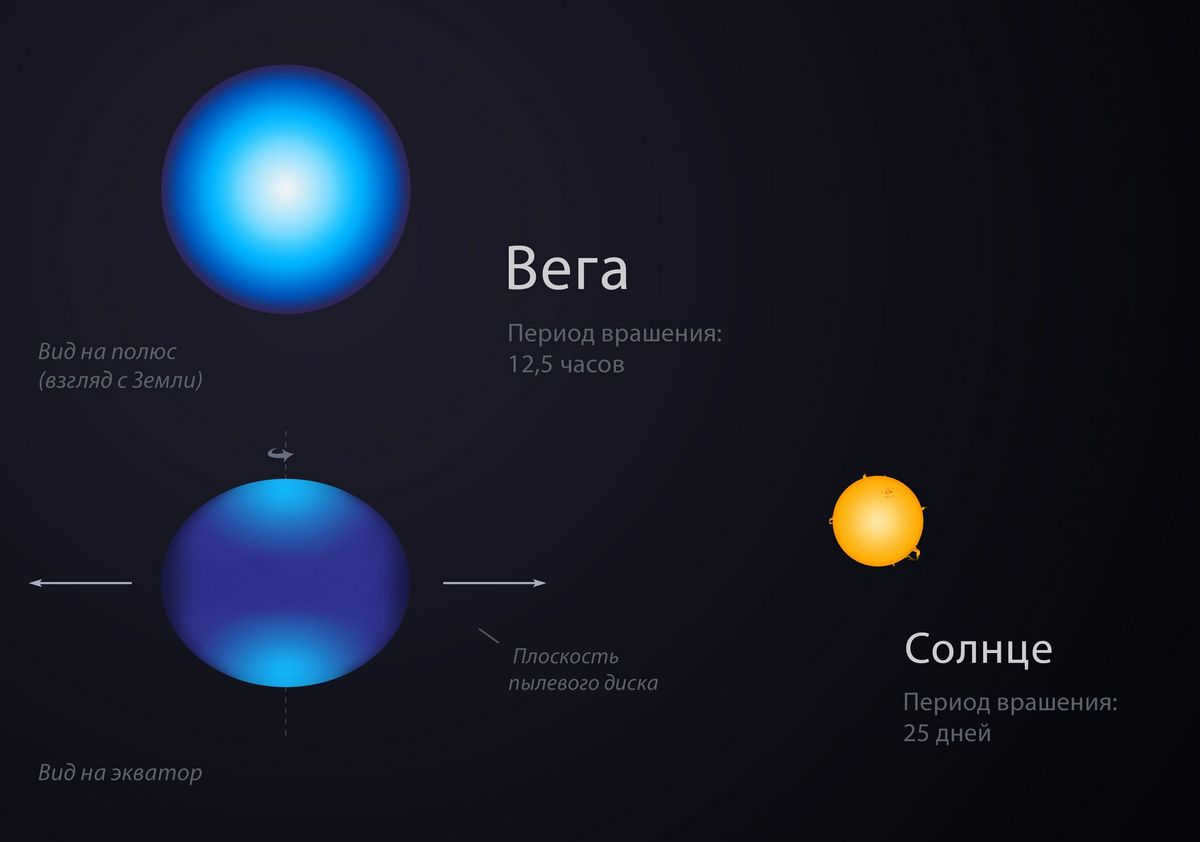
The size of Vega compared to the Sun. Illustration: The Massive Universe
Vega is the pioneer star to have a detected circumstellar disk
In the early 1980s, the orbiting IRAS telescope was operational in space. Its purpose was to compile an infrared view of the sky. Based on the findings of the telescope’s work in 1984, astronomers announced the detection of several stars with residual dust and debris disks, similar in structure and properties to the Kuiper belt in our Solar System. Vega was the initial star in which such a disk was discovered. It was found to be immense – the disk’s radius is at least 550 astronomical units!
This finding also represented the initial proof of the presence of solid substances (like dust and small asteroids) within stars that are located beyond our Solar System. Since then, any stars that exhibit an overabundance of radiation in the far-infrared portion of the electromagnetic spectrum have been classified as “Vega-like” stars.

This image shows the dust disk surrounding Vega, captured using 24 and 70 microns wavelengths. The photograph was taken by NASA/JPL-Caltech/K.Su.
As a result, Vega was identified as the initial among the most luminous celestial bodies where the presence of exoplanets was presumed. Nevertheless, the verification of a planet’s existence is still pending. For instance, the latest scrutinies conducted with more advanced instruments have failed to substantiate the existence of dust particles in the infrared or submillimeter segments of the spectrum.
Vega remains a guiding star and will continue to do so
Polaris is not famous for being the brightest star, contrary to what some people who are not interested in astronomy may think. Its fame stems from the fact that it points towards the north pole of the Earth. This means that Polaris always stays in the same position in the sky, regardless of the time of year or day.
However, this has not always been the case, due to the Earth’s axis of rotation being in constant motion. It traces a cone in space over a period of 25,770 years. This phenomenon, known as precession, was first discovered by the ancient astronomer Hipparchus. As a result of precession, the celestial pole gradually shifts across the sky, moving from one star to another.
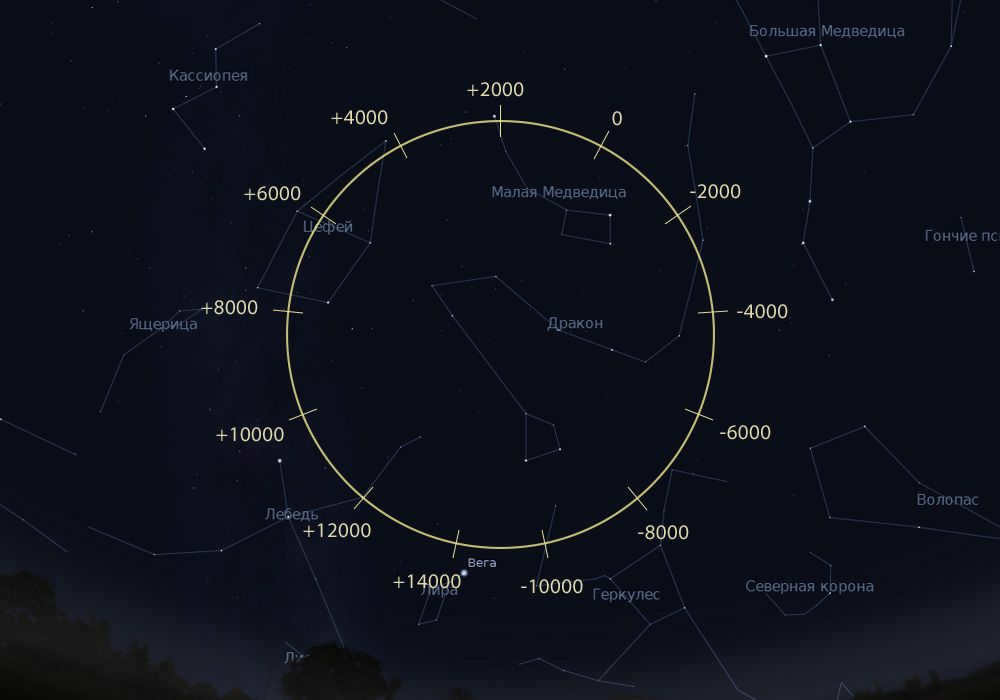
The Earth’s axis of rotation traces a circular path in the sky over a period of approximately 25776 years. This circular path has a diameter of approximately 60 degrees. Image: The Vast Universe
Around 12,500 years ago, the celestial pole was located near the star Vega. It then shifted to the constellation Draco, known for its gamma-ray emissions, and later to the star Tuban. During Homer’s time, the star Kochab, the beta star of the Little Bear constellation, served as the pole star, and only in the last thousand and fifteen years has it been Polaris.
It is worth noting that out of all these stars, Vega shines the brightest! It is possible that in ancient times, Vega served as a reliable guide for early travelers, just like Polaris does today!
After approximately 13.5 thousand years, the precession will complete its cycle, and the north pole of the Earth will once again be less than 4° away from the brilliant star Vega.
In the future, Vega will become the most luminous star in the sky, second only to the Sun
In a rough estimate, the Sun, along with the planets, is moving towards Vega. This does not imply that the solar system will collide with the star, as the vastness of space is too immense for such collisions. However, in the distant future, within a time span of 210 – 480 thousand years from our present days, Vega will take the place of Sirius as the brightest star in Earth’s night sky. In approximately 290,000 years, the star will come closest to us at a minimum distance of about 17.2 light years; its luminosity will be -0.81 magnitudes.
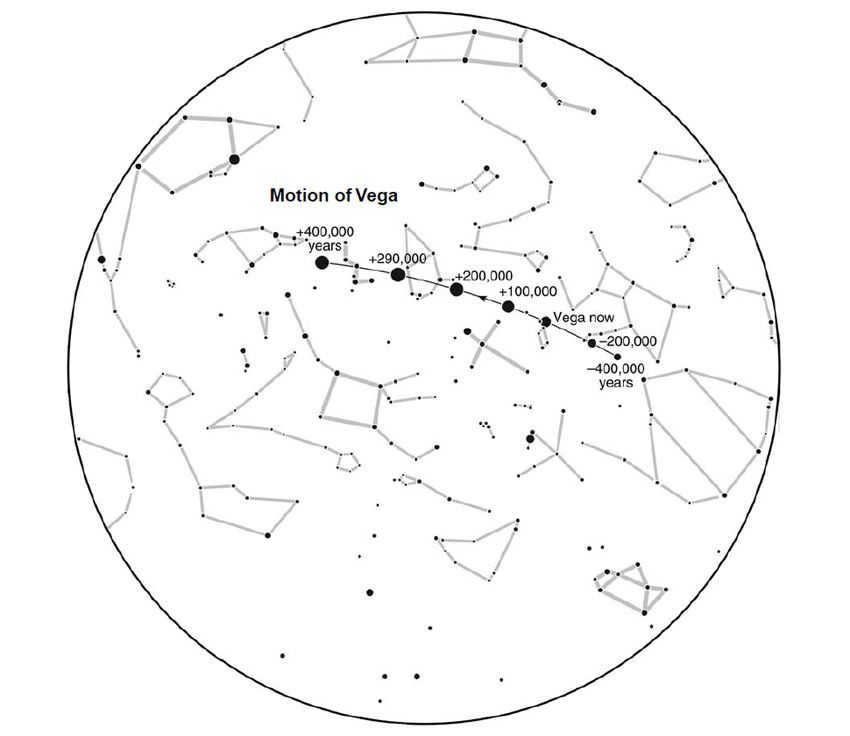
The motion of Vega in the Earth’s sky over the course of 800,000 years is depicted in the image by Fred Schaaf.
In a million years, Vega will gradually move further away and eventually become invisible to the naked eye. During this time, other stars will take its place in the Earth’s sky, joining the grand galactic chorus as temporary companions of our Sun.
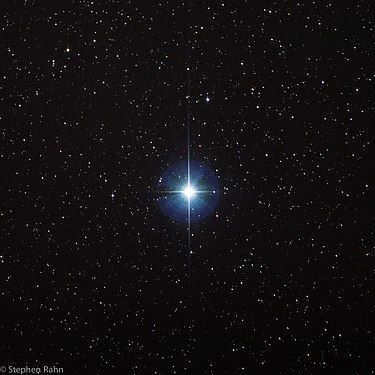
Vega – Vega is the most luminous star in the Lyra constellation, the fifth most luminous star in the night sky, and the second most luminous (after Arcturus) in the Northern Hemisphere, and the third most luminous star (after Sirius and Arcturus) observable in Russia. Vega is located at a distance of 25.3 light-years from the Sun and is one of the most brilliant stars in its vicinity.
Together with Altair and Deneb, Vega forms the well-known “summer-autumn triangle,” which is easily visible in the Northern Hemisphere during the summer and autumn months.
Quotations [edit]
I ascended the precipice, leapt over the stream multiple times, passed by everyone, grasping onto the planks, underneath the cascades of the mill-wheel, and then, as everyone went home with the sunset, I remained seated and lost in thought on the edge of the expansive reservoir. Gradually, the crimson dawn faded away, and the perpetually yellowish Arcturus gleamed like a faint speck in the western sky, while directly above me, the silver Vega radiated, the splendor of our summer nights. [1]
– Look right above the house, over there, – Christoforov pointed with his hand, – it’s the blue star Vega, the alpha of the Lyra constellation. It’s moving towards the sunset.
– Do you remember," Mashura said, "that night near Zvenigorod when we gazed at that star and you claimed it was yours, but you didn’t explain why it was yours.
– I couldn’t explain back then," Khristoforov replied, "not yet.
– And now?
– Now," he said softly, "the circumstances have changed. I can tell you. He paused for a moment. – I have a belief, perhaps peculiar to others: that this star is my guiding star. I was born under it. I know her and I adore her. When I see her, I find peace. She is the first thing I notice when I gaze at the sky. To me, she embodies beauty, truth, divinity. She is also a woman. And she sends me the light of love. Mashura closed her eyes.
– That’s it! That’s what I suspected.
– In you," Khristoforov continued, "there is a part of her radiance. That’s why you are my kindred spirit. That’s why I’m sharing this with you. – Wait," Mashura said, still keeping her eyes closed, and took his hand. – Let’s be silent for a moment. Silence is necessary, I’ll be right back. [2]
When you gaze up at the sky from there, the air feels incredible. I am familiar with it all, I appreciate it, there is nothing new. But when I lift my head: high, right above me, there it is, yes, there is no doubt. The bright blue star Vega. I had observed it before in the evenings, but I was uncertain – I couldn’t make out its constellation through the city’s cloud of tiny stars. And now it is unmistakable: it is she who guides the golden parallelogram, four sisters alike and one more on the side, all together forming Lyra, a constellation with six points. Its alpha is a brilliant blue star, of the first magnitude. Vega, the young maiden of the sky. She is closer to the others and younger, her light takes less time to reach us and it radiates a gentle blue hue, in it there is serenity and tranquility. I have seen her in Russia, in times of joy and sorrow, through the branches of the Pritykinsky linden trees and from the well in the courtyard of Lubyanka. I spotted her in Provence, near the abandoned Toronet monastery, where there is a trail in the forest that St. Bernard once rode on a donkey to reach the abbey. I lost sight of her in Paris. But now, in the early hours of the morning, she revealed herself to me once again above Boulogne. Silence. Shortly after the war, on Good Friday, a massive charcoal inscription appeared on the wall of our cemetery, right on the street: – "Silence! Christ est mort. Astonishing. – Silence! Christ est mort. Astonishing.
The objective was to explore the extensive planetary system orbiting the blue star Vega, which is also known as Alpha Lyra. Over the course of numerous generations, countless human observers have marveled at the dazzling blue hue of this celestial body situated in the northern hemisphere. Vega is located at a distance of eight parsecs, which translates to a journey of thirty-one years in terms of independent time. Thus far, mankind has not ventured beyond these vast distances from our own Sun.
– Throughout the ages, countless individuals on Earth have gazed up at Vega. During the summer nights in the northern hemisphere, all the young dreamers would cast their eyes to the heavens. In the summertime, Vega, shining bright and blue, would reach its highest point in the sky – how could one not admire its beauty? Millennia ago, people possessed a fair amount of knowledge about the stars. However, through a peculiar chain of thought, they failed to realize that planets were forming around nearly every slowly rotating star with a strong magnetic field, much like how every planet has its own satellites. This law eluded them, but they still yearned for brethren on other worlds, particularly on Vega, the blue sun. I recall reading translations of exquisite poems about semi-divine beings from the blue star in some ancient language.
– “Ever since the Sails report, I’ve been dreaming of Vega,” the Chief addressed Aeon Tal.
– Now it has become clear that our millennia-long desire for distant and splendid worlds has blinded not only me, but also many wise and serious individuals.
– How will you interpret the message from the Sails now?
– It’s simple. “The four planets of Vega are completely devoid of life.” “Nothing can compare to the beauty of our Earth. What a joy it will be to return!” – You are absolutely right!
He strolled to the window while whistling to himself. The forest was in a state of slumber, with the flowers shutting their petals. A fog emerged from the lifeless gray trees, floating above the grass in delicate, ethereal sheets. The tranquility of the forest became gentle and humid, so pristine that it appeared to capture the whispers of the stars of the Summer Triangle—Vega, Deneb, Altair—as they silently traversed the sky.
In poetry [ edit ]
Feeling the coolness of the ancient slabs against my back,
I lay on the steps and looked up at the sky,
Where the flames of Vega and the gentle fire of Deneb
Melt the indigo zenith with their bright glow.
The omega star marks the edge of heaven,
Sparkling with colorful sparks, like Sirius.
High above, the silent Vega
Freezes the earth with its realm of darkness and snow.
[4]
Our ship,
On a single journey,
Was headed towards
The America of the ages,
♪ And trembling ♪
Sparkling Vega,
Guiding us
Towards the world record. [5]
So the radiant Star of Wanderings,
My azure Vega,
Will pause above the dome of the house,
And with a friendly beam,
Illuminate the young pines,
Creating a resting place. [6]
During the sleepless hours, within the profound silence of the world, a symphony of voices resonates in my ears: Vega, Virgo, Lyra. [5]
References [edit]
- ↑N.A. Morozov. “Stories of My Life”. – Moscow: Nauka, 1965.
- ↑B.K.Zaitsev. “White Light”. Prose. – M.: Khudozhestvennaya literatura, 1990.
- ↑V.A.Mezentsev “Miracles: a Popular Encyclopedia”. Volume 2, book 3. – Alma-Ata: Main Editorial Office of the Kazakh Soviet Encyclopedia, 1991.
- ↑A.A.Blok. Collected Works in Eight Volumes. – Moscow: GIHL, 1960-1963.
- ↑ 12Н. N. Aseev. Poems and poems. Library of the poet. Large series. Second edition. – L.: Soviet Writer, 1967.
- ↑D.L.Andreev. Collected Works. – Moscow: “Russian Way”, 2006.
Also check out [ edit ]
- Article on Wikipedia
- Quotes on Wikiquote
- Multimedia on Wikimedia Commons
- News on Wikinews
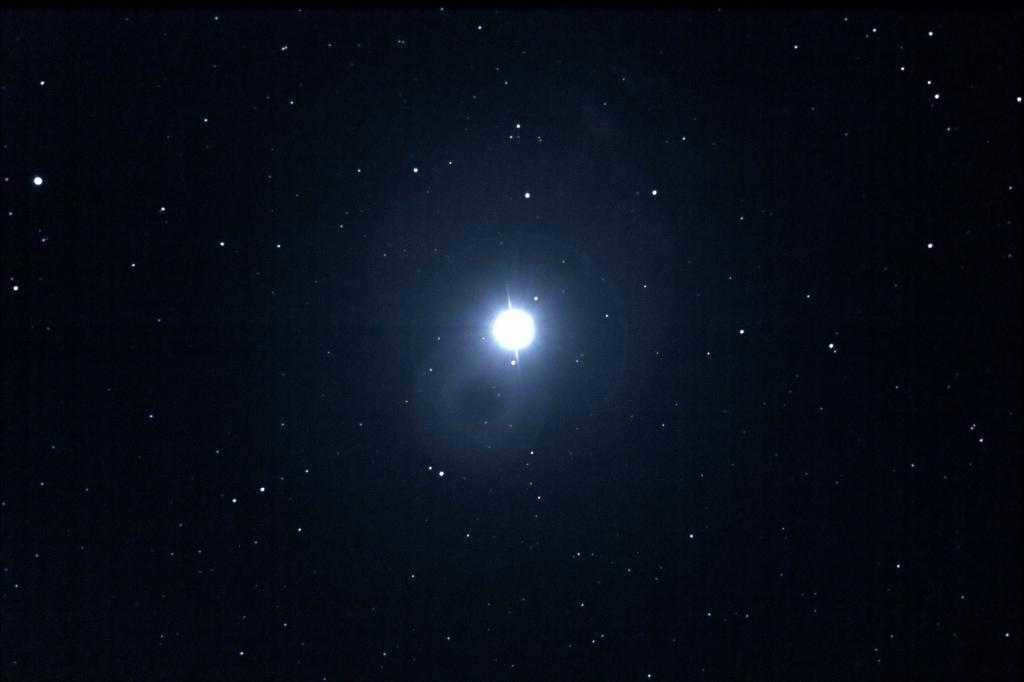
During the summer and autumn seasons, stargazers in the northern hemisphere can observe a well-known asterism known as the Great Summer Triangle. Positioned at the apex of this celestial formation is Vega, a brilliant blue star and the primary star within the Lyra constellation.
Historical Background
The term Vega is derived from the Arabic phrase “falling eagle”. In scientific literature, it is officially referred to as Alpha Lyrae (α Lyrae / α Lyr). When it comes to luminosity as perceived by individuals residing in Russia, Vega ranks as the third celestial body after Sirius and Arcturus. The approximate distance from the Sun to Vega is 25.3 light-years, which is regarded as relatively proximate.
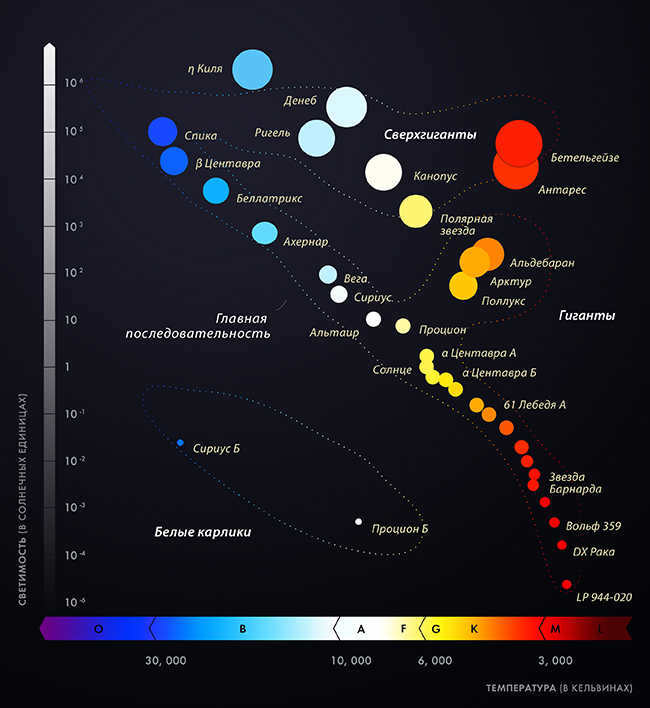
Vega, located in the Hershprung-Russell diagram, played a pivotal role in the advancement of astrophysics. It was instrumental in the development of the photometric system used to ascertain the color and luminosity of UVB stars. Specifically, Vega’s luminosity was designated as 0, serving as the reference point for this system.
Notably, Vega holds the distinction of being the first star to be captured in a photograph following the Sun. Furthermore, it was among the earliest stars to have its distance determined through the parallax method. Interestingly, in the 12th century BC, Vega served as Polaris, the guiding star pointing to the North Pole, and it will reassume this role in another 12,000 years!
Characteristics of Vega
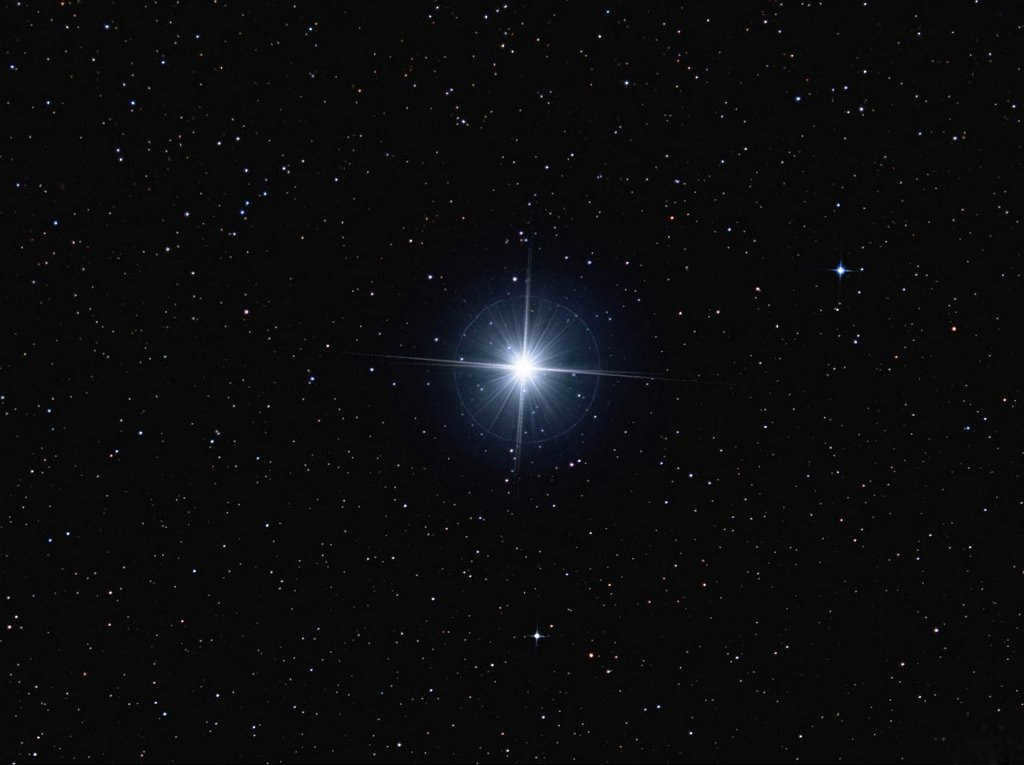
Vega, a star classified as A0V, is a main-sequence white star. Its energy is derived from the fusion of hydrogen and helium through thermonuclear reactions. Vega is significantly heavier than the Sun, with a luminosity 37 times greater. Due to its immense mass, this blue star will remain in its white star phase for approximately 1 billion years, accounting for just one-tenth of the Sun’s lifetime. At an age of 386-510 million years, Vega currently finds itself in the middle of its lifespan, similar to our own Sun. Eventually, Vega will transform into a red giant of the M-type and ultimately evolve into a white dwarf.
Parameters
The radius of Vega was determined to be 2.73 ± 0.01 times the radius of the Sun. However, this finding contradicted the theoretical calculations of the star’s size. The discrepancy can likely be attributed to the star’s high rotation speed, which was confirmed by observations in 2005. In fact, Vega rotates so rapidly that it has an elliptical shape. The rotation speed of Vega is an astounding 274 kilometers per second. Additionally, Vega’s equatorial diameter is 23% greater than its polar diameter.
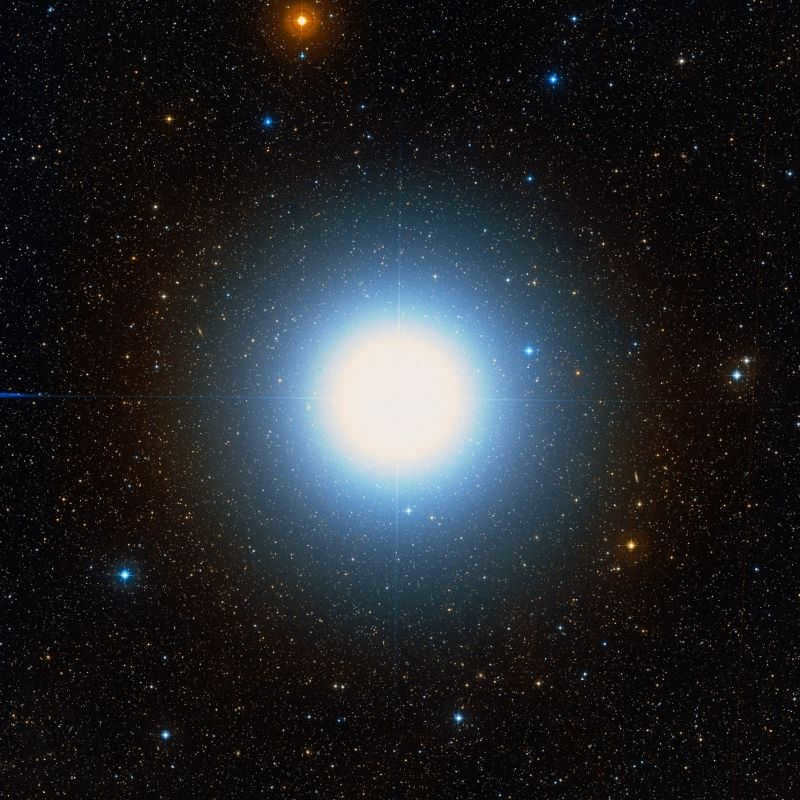
In the field of astronomy, elements that are heavier than helium are classified as metals. However, the star Vega contains a relatively small amount of these metals, accounting for only 32% of the total amount found in the Sun.
Related Resources
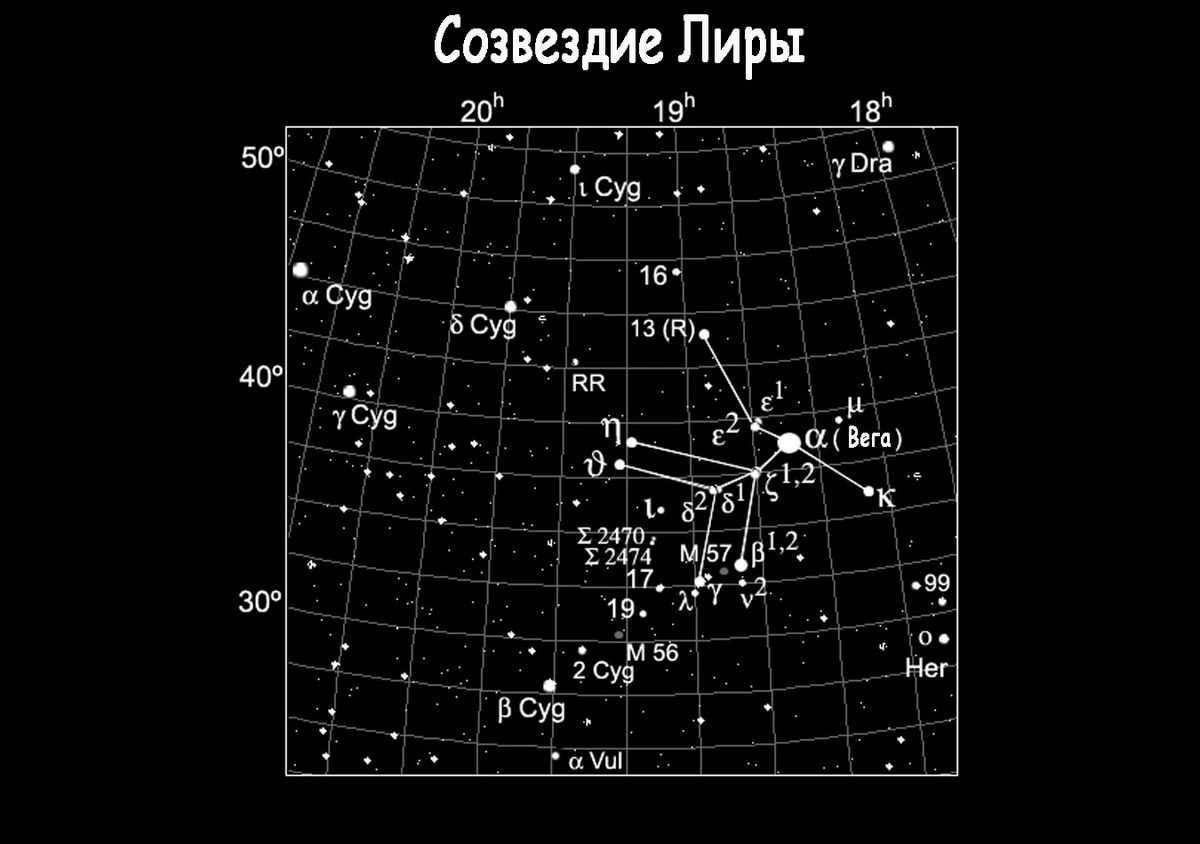
It is still not clear why this is happening. The velocity at which stars move in relation to the Earth is determined by observing the shift in their spectrum. If the shift is towards the red part of the spectrum, it means that the celestial object is moving away from Earth. In the case of Vega, this shift is -13.9 ± 0.9 km/s, with the negative sign indicating that the “falling eagle” is actually approaching us.
Motion
The star also possesses its own motion velocity. It measures 202.03 ±0.63 milliseconds of arc in right ascension and 278.47 ±0.54 milliseconds of arc in declination. On the celestial sphere, Vega traverses 1 degree over a span of 11,000 years. In relation to neighboring stars, this blue star moves at a similar pace as the Sun, or 19 km/sec.
Astronomers have examined other stars resembling Vega, and as a result, it has been designated as part of the Castor group. This collective includes 16 stars that move in parallel to one another with equivalent velocities. Scientists speculate that the celestial bodies in this group originated from the same location and time, but eventually became gravitationally detached.
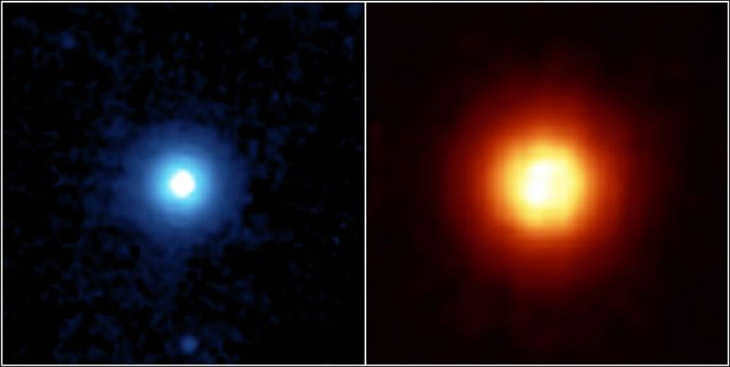
An image taken by the Spitzer telescope shows a dust disk surrounding a planet, captured at wavelengths of 24 (left) and 70 microns.
Research is currently underway to determine whether Vega has any exoplanets, including those similar to Earth. However, at this time, the question remains unanswered. So far, scientists have only identified the presence of a dust disk around Vega.
Embark on a journey to Vega
Vega has undoubtedly captured the interest of countless individuals throughout history due to its exceptional brightness. As a result, it has become a prominent figure in the myths and legends of various cultures across the globe.
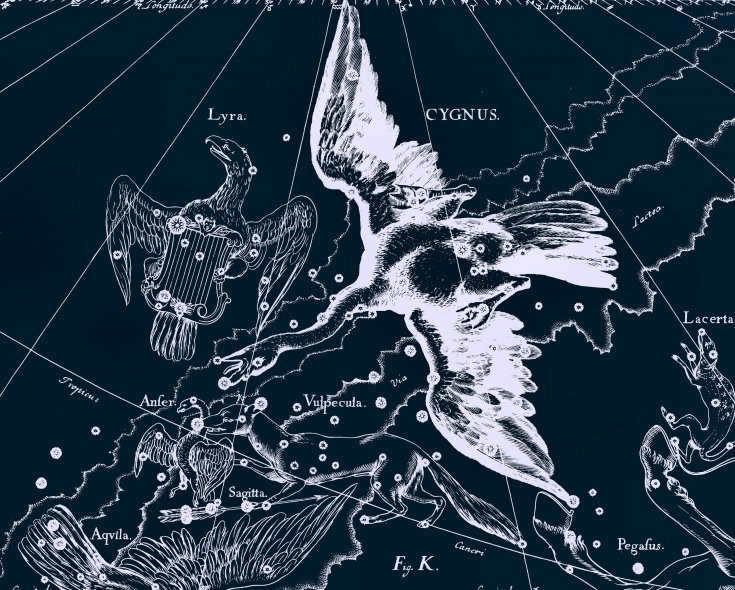

Jan Hevelius’s ancient atlas of the starry sky features a drawing of the constellations Lyra and the Swan.
In Chinese mythology, Altair, known as Nu-Lan on Earth, follows the advice of his old ox and journeys to the Silver River, where he meets and marries a girl named Zhi-nui (also known as Vega). Zhi-nui is the granddaughter of Tian-di, the heavenly ruler. Altair and Zhi-nui have a son and daughter named β and γ Eagle. However, the heavenly ruler takes Zhi-nui back to heaven, and the couple is only allowed to see each other once a year. This special day, known as the 7th day of the 7th moon, is celebrated by the Chinese as the day when lovers reunite.
Vega summed up
Compilation of the most luminous stars
| 0 | Sun | 0.0000158 | -26.72 | 4.8 | G2V | |
| 1 | Sirius (Alpha of the Big Dog) | 8.6 | -1.46 | 1.4 | A1Vm | Southern |
| 2 | Canopus (Alpha of Kiel) | 310 | -0.72 | -5.53 | A9II | South |
| 3 | Toliman (Alpha Centauri) | 4.3 | -0.27 | 4.06 | G2V+K1V | South |
| 4 | Arcturus (Alpha Volopassus) | 34 | -0.04 | -0.3 | K1.5IIIp | North |
| 5 | Vega (Alpha Lyra) | 25 | 0.03 (permanent) | 0.6 | A0Va | North |
| 6 | Capella (Alpha Ascendant) | 41 | 0.08 | -0.5 | G6III + G2III | North |
| 7 | Rigel (Beta Orion) | ~870 | 0.12 (permanent) | -7 | B8Iae | South |
| 8 | Procyon (Alpha of the Lesser Dog) | 11.4 | 0.38 | 2.6 | F5IV-V | North |
| 9 | Ahernar (Alpha Eridanus) | 69 | 0.46 | -1.3 | B3Vnp | South |
| 10 | Betelgeuse (Alpha Orion) | ~530 | 0.50 (permanent) | -5.14 | M2Iab | North |
| 11 | Hadar (Beta Centauri) | ~400 | 0.61 (permanent) | -4.4 | B1III | South |
| 12 | Altair (Alpha Eagle) | 16 | 0.77 | 2.3 | A7Vn | North |
| 13 | Acrux (Alpha of the Southern Cross) | ~330 | 0.79 | -4.6 | B0.5Iv + B1Vn | South |
| 14 | Aldebaran (Alpha Taurus) | 60 | 0.85 (removable) | -0.3 | K5III | North |
| 15 | Antares (Alpha Scorpio) | ~610 | 0.96 (permanent) | -5.2 | M1.5Iab | South |
| 16 | Spica (Alpha Virgo) | 250 | 0.98 (permanent) | -3.2 | B1V | Southern |
| 17 | Pollux (Beta Gemini) | 40 | 1.14 | 0.7 | K0IIIb | Northern |
| 18 | Fomalhaut (Alpha of South Pisces) | 22 | 1.16 | 2.0 | A3Va | Southern |
| 19 | Mimosa (Beta of Southern Cross) | ~290 | 1.25 (permanent) | -4.7 | B0.5III | Southern |
| 20 | Deneb (Alpha of the Swan) | ~1550 | 1.25 | -7.2 | A2Ia | Northern |
| 21 | Regulus (Alpha Leo) | 69 | 1.35 | -0.3 | B7Vn | Northern |
| 22 | Adara (Epsilon of the Great Dog) | ~400 | 1.50 | -4.8 | B2II | South |
| 23 | Castor (Alpha Gemini) | 49 | 1.57 | 0.5 | A1V + A2V | Northern |
| 24 | Hakrux (Gamma Southern Cross) | 120 | 1.63 (permanent) | -1.2 | M3.5III | South |
| 25 | Shaula (Lambda Scorpio) | 330 | 1.63 (permanent) | -3.5 | B1.5IV | Southern |
This post was published on 05.03.2014
Author: Maxim Zabolotsky
The term “Vega” signifies “descent” and originates from the Arabic word “Vega”.
Vega is a constituent of the Lyra constellation and stands as the fifth most luminous star in the celestial sphere. It also holds the distinction of being the second most significant star, trailing only behind the Sun, due to its historical role as Polaris (in relation to Earth) in 12000 BC.
This brilliant star is situated approximately 25 million light-years away from the Sun and is about 40 times more luminous, possessing a surface temperature of 16823 F (9328 C). Despite having a massive size that is twice that of the Sun, it is categorized as a young star as it formed roughly 500-800 billion years ago. Owing to its substantial mass, this star will deplete all of its energy at a faster rate compared to smaller stars, eventually evolving into a white dwarf.
According to astronomers, Vega is composed of gas and dust particles from the interstellar medium. It has been observed that its photosphere contains only approximately 32% of the metallic elements present in the Sun’s atmosphere. Vega spins with a rotation rate of roughly 12.5 hours, which has resulted in the formation of an equatorial bulge. The star’s poles have elevated temperatures. Additionally, it emits a greater amount of ultraviolet radiation compared to the Sun.
Continue reading to discover additional fascinating details about the Vega star.
The Position of Vega Star
Vega can be found in the mid-northern region and remains visible on the horizon for approximately seven hours. As a result, it is possible to observe Vega at any given time during the night.
Vega can be observed below the horizon for extended periods of time in the southern regions. However, in northern Canada, Alaska, and Europe, Vega remains visible above the horizon at all times. It is a component of the Lyra star system and can be easily spotted on the northern horizon during the summer season. Vega is a key element of the “Summer Triangle,” which consists of three prominent stars known as Altair, Deneb, and Vega. Positioned at the apex of this triangle, Vega forms a right angle with the other two stars. The precise coordinates of Vega are 18 h 36 m 56.3 s (right ascension) and 38 degrees 47 m 01 s (declination). Due to its location at 51° south latitude, Vega cannot be observed in southern areas such as Antarctica and South America.
Characteristics of Vega Star
Vega, previously known as Polaris, holds significant value in the study of our ancient civilization. Astronomers consider it the second most crucial star in our solar system, right after the Sun.
Furthermore, Vega holds the distinction of being the first star to have its spectrum recorded and the second star to be photographed. Its initial photographs were captured in 1850. Located approximately 25 light-years away from the Sun, Vega spins at an astounding speed of 146.6 miles per second (236 kilometers per second) in a mere 12.5 hours. As a result, its polar radius is 19% smaller than its equatorial radius. In contrast, the Sun completes its rotation in approximately 28 days. With a size 2.1 times larger than the Sun, Vega shines as the fifth brightest star in the night sky. It belongs to the main-sequence star classification and falls under class A.
Vega, also known as Alpha Lyra, is a prominent star that has been measured for its distance using parallax techniques. The star is composed of elements with atomic numbers higher than helium. It is estimated to be around 350 million years old, which is approximately 1/13th the age of the Sun, making it relatively young in comparison. Vega is visible to the naked eye and has a magnitude that ranges from 0.127 to 0.068.
In 2013, astronomers discovered an asteroid belt surrounding Vega. This discovery has prompted speculation about the potential existence of planets in the vicinity of the star, which was formerly known as Polaris. However, the asteroid belt primarily consists of rocks, icy asteroids, and other debris, similar to the Kuiper belt. Because of this, stars with dusty radiation are classified as Vega-type stars.
Distance between Earth and Vega star
Vega is situated approximately 25.05 light years away from Earth. It can be easily observed from the night sky near the north celestial pole.
Due to its rapid rotation, Vega has a slight bulge at its equator. The star’s photosphere experiences varying temperature conditions, with the highest temperatures found at the poles. Vega also possesses a circumstellar disk, which is primarily formed through collisions.
The presence of a dust disk surrounding the star suggests that it has undergone tectonic or planet-forming activity. There are over 10 stars in close proximity to Vega, all of which are located 10 light years away.


A comparison between Vega and our Sun
Vega shines 40 times brighter and is twice as hot as our Sun. It has a size that is 2.1 times larger than the Sun, and due to its massive size, Vega will burn out at a faster rate compared to smaller stars.
Vega holds the distinction of being the second most significant star in our solar system, coming after our Sun. In ancient times, it was known as Polaris. With a brightness that surpasses the Sun by 60 times, Vega is estimated to be around 350 million years old, which is only 1/13th of the Sun’s age.
Vega, the fifth brightest star in the night sky, is an A-class white main-sequence star.
If you are wondering where Vega is located in the night sky, it can be seen in the northeastern direction from the Northern Hemisphere. Its exceptional brightness makes it stand out prominently among other stars.
Now, you might ask if Vega is a main sequence star. The answer is yes, Vega belongs to the main sequence of the constellation Lyra.
So, what stage is Vega currently in? It is currently in the main-sequence stage and appears like a red giant in the northern sky. However, once it exhausts all its energy, it will transform into a white dwarf.
Lastly, the surface temperature of the star Vega is approximately 16823 F (9328 C).





